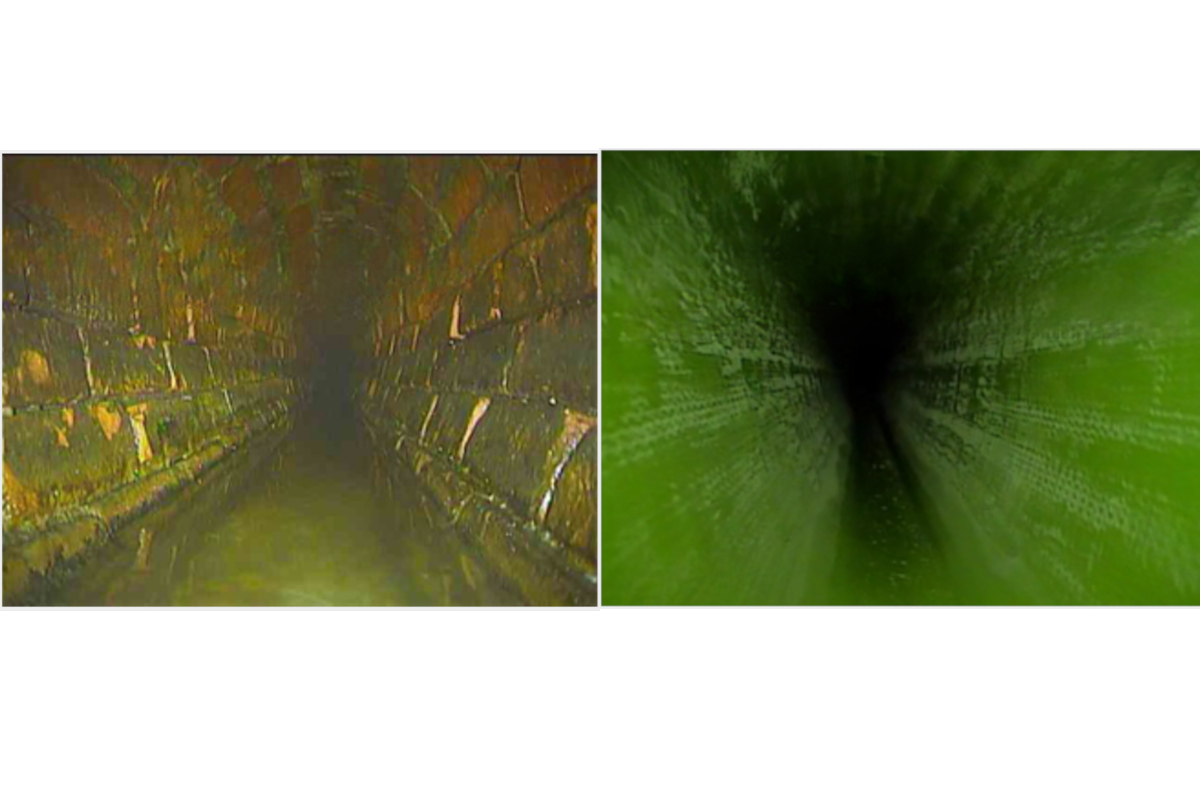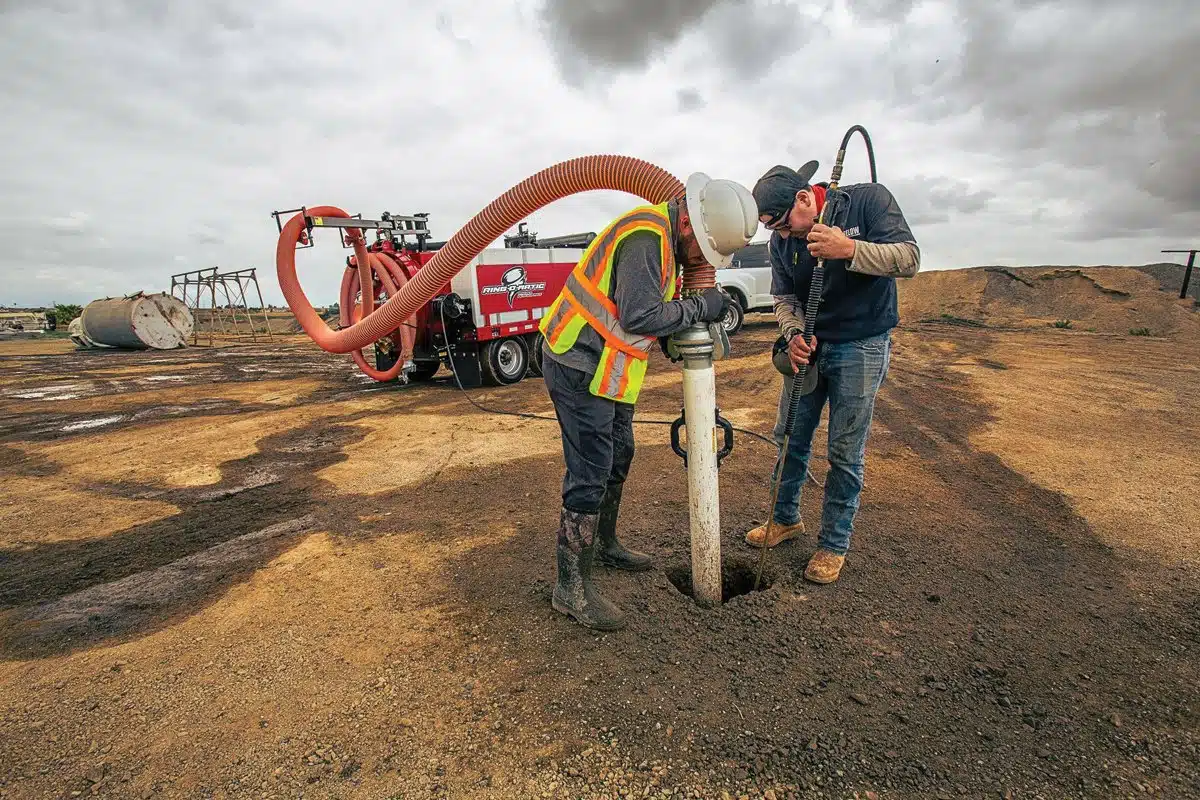
Dewatering System in a No-Room-for-Error Bypass Project
The Maid of the Mist boat tour is one of the most enduring and popular tourist attractions in western New York, visited by more than 1.5 million people a year. On a busy summer weekend in 2017, tourgoers expecting to feel the spray of Niagara Falls on their faces instead were taken aback by a foul-smelling black plume spreading beneath the boat. The source of the sludgy water was attributed to discharge from the nearby Niagara Falls Wastewater Treatment Plant that occurred as part of routine daily maintenance of one of its wastewater sedimentation basins.
That incident, along with several discharges by the wastewater treatment plant into the Niagara River, triggered by overflow from heavy rains, resulted in $50,000 in fines from the New York Department of Environmental Conservation.
Under pressure to avoid further fines and another international spectacle, wastewater treatment plant officials determined that a weir — a wall or barrier to regulate flow — would put an end at least to the inky discharge. This would prevent the black carbon dust that results from the cleaning of the carbon filters from discharging directly into the Niagara River by ensuring the mixing of effluent and flush waters destined for discharge.
RELATED: Sliplining Used to Rehabilitate Niagara Falls Sewer

Not your Routine Bypass
The plant upgrade, set for August 2020, would take approximately one week. During that time, the construction area would need to remain completely dry. Officials turned to longtime partner Xylem Rental Solutions to set up a temporary bypass system to divert the discharge flow from the work area without interrupting plant operations.
The Xylem Rental Solutions team of Robert LeFevre, Bradley Snyder and Darrin Ruiz quickly realized this was no ordinary bypass project. With crews working in the tight 10-ft-by-10-ft footprint of the sedimentation basin, the large, submersible pumps typically used in sewer bypass projects would be impossible to maneuver into the space.
“There was no way to set up multiple suction-style pumps in close proximity to the project area,” LeFevre explained.
The unique high-flow, low-head requirements of the project presented additional challenges in pump selection. A massive flow rate of 43 million gallons per day (MGD) eliminated Xylem’s Godwin Heidra Series submersible pumps from contention since the extremely powerful pumps are designed for low-flow, high-head situations with high horsepower for handling slurries and solids.
That’s when the team tapped into the vast resources of the Xylem portfolio to put together a turnkey solution.

Thinking Outside the Box
The Xylem team presented treatment plant officials with a plan to use Godwin 30-in. hydraulic axial flow pumps, designed for dewatering and irrigation applications. The recommendation for a clean-water pump was a bit of head scratcher for officials involved in a sewage treatment operation, but they were quickly convinced.
RELATED: Trenchless Tech Forum – Tips for Sewer Bypass Pump Startup Success
“If this was for the incoming side of the treatment plant, the axial pumps would clog,” Ruiz said. “But on the back side of the operation the effluent is already screened of solids, so clogging wasn’t a concern.
The flow characteristics of the Godwin hydraulic axial pumps offered a match for this project and have long been a proven tool for dewatering after hurricanes and protection from flood surges and pumping water through lazy rivers and wave pools in amusement parks.
The Xylem solution called for the fully automated axial flow pumps running off a Godwin Primeguard 2 control system with Field Smart Technology (FST). With FST, data is transmitted to a password-protected website for viewing and reporting, and displays the same information that is shown on the PrimeGuard 2 panel. It provides plant operators with peace of mind and eliminates the need for on-site personnel to monitor the system, saving on labor costs.
The bypass system also consisted of 300 ft of HDPE pipe fusion and installation, requiring a crane to deliver the material to the site and place the pipes into position. “It’s an unsung art by the fusion techs to bend, cut and weld those large pieces of pipe together,” Ruiz said, noting the additional expertise Xylem Rental Solutions provides its customers.

Tight time frame
The Xylem team had just one week to plan a bypass system that, among other considerations, could have absolutely zero overflow into the work area. “Typically, there is a bit of overflow when water pressures fluctuate,” Ruiz said. “But in this case, none of our calculations could be off or someone would be getting wet with sewer water.”
The team laid out a system of three pumps vs. an anticipated six, which meant substantial time savings on rental equipment for the customer, as well as hefty fuel savings.
RELATED: Onondaga County Pump Station Undergoes Vital Upgrades with Aid of Temporary Bypass System
“A general rental house does not have the equipment for what amounted to a specialty application,” LeFevre said. “Xylem has the tools and the expertise for a project like this, and we are set up to mobilize immediately, not months down the road.”
Once the design proposal was accepted, materials arrived at the site in less than a week for quick setup. Due to the location of the treatment plant on the banks of the Niagara River, the work site was within view of Niagara Falls tourists, making this a no-room-for-error project.
“As a company, we value the importance of water,” Ruiz said. “Niagara Falls is a national treasure, and we want to do our part to protect the natural beauty of the area for our children and grandchildren.”
Article provided by Xylem.




